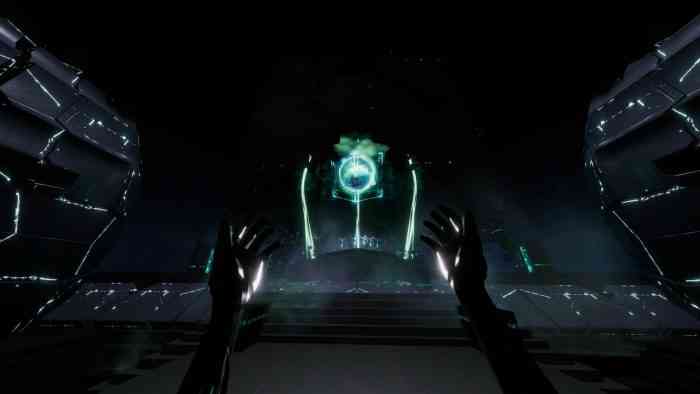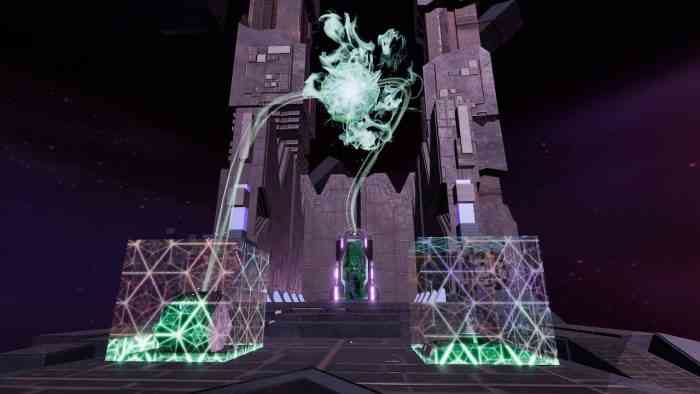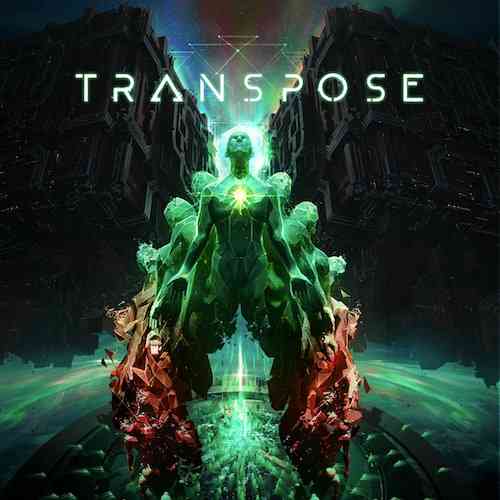How Good Are You at Cooperating with Yourself?
The realm of VR keeps getting better and better as studios become more familiar with technology. VR games don’t feel like tech demos anymore, nor do I feel like I need to qualify critiques of these games as “it’s good for a VR game.” Transpose by developers Secret Location is a good game that happens to be a VR title. Transpose is a unique platform puzzler, one that tests your spatial and temporal awareness. I recently had a chance to play an early version of the first few levels and have a lot of good things to say about my experience with the past versions of myself.

As the tutorial kicks off, you’re placed in the main hub. Somewhat akin to a derelict space station with floating platforms, you’re guided through the first open portal for the introductory stage. Like any good puzzle game, you are slowly introduced to the rules of the virtual world. The first stages are simple enough: make sure you understand how to move and learn what the basic lock-and-key system looks like. A couple stages in, you’re introduced to the main mechanic, the time-loop. By ripping out the core of another figure (something that felt pretty satisfying with the Oculus controller), you gain the ability for a copy of yourself to replay your movements from the start of the level. It’s not a new concept in puzzle games, but it is a mechanic that opens up a lot of fun possibilities in VR. Hands down, the best moment of the demo was when a previous version of me tossed the key I needed to the present version of me, catching the ball like a wide receiver on the other side of a chasm. The demo I tried ended one level after the tutorial, but by that point I had gathered 3 cores, meaning I could make up to 3 copies of myself in a single stage. I was told, however, that there were still several more cores to collect.

The developers have given players a lot of choice when it comes to how you can play your character. Often VR games have a limited form of mobility, either by walking with an analog stick, teleporting around, or moving on a rail. Transpose features both an analog option for walking around and a teleporting option for hoping short distances. I found myself using both options regularly as it felt more natural. There is some verticality in the levels that can only be traversed with the teleport, but for simply moving around platforms the analog stick worked just fine. I never felt sick while playing either, which is huge considering I was coming down from a case of vertigo a couple days before. All the mobility and controls felt very intuitive, including interacting with the “key” cube and the wrist controls for the time-loop clones.

There does seem to be an overarching narrative that’s told as you progress through the levels, something that reminds me of the storytelling in the Witness. There weren’t any easter eggs in the demo, I was told (I did do my due diligence though, searching every nook and cranny), but there would likely be some things in the release version for those who become master manipulators of their echos. Its not an incredibly detailed environment, but it’s also not overly cluttered with extraneous junk. The shape and size of every platform is purposeful, designed to keep players from using simple solutions to solve the puzzles.
I’m a huge fan of any puzzle game that is centered around a core mechanic that’s easy to use but hard to master. With brilliant level design from what I’ve seen so far, Transpose certainly looks promising to become one of the best VR titles this year. The expected release is currently Fall 2018 for all major VR devices.

